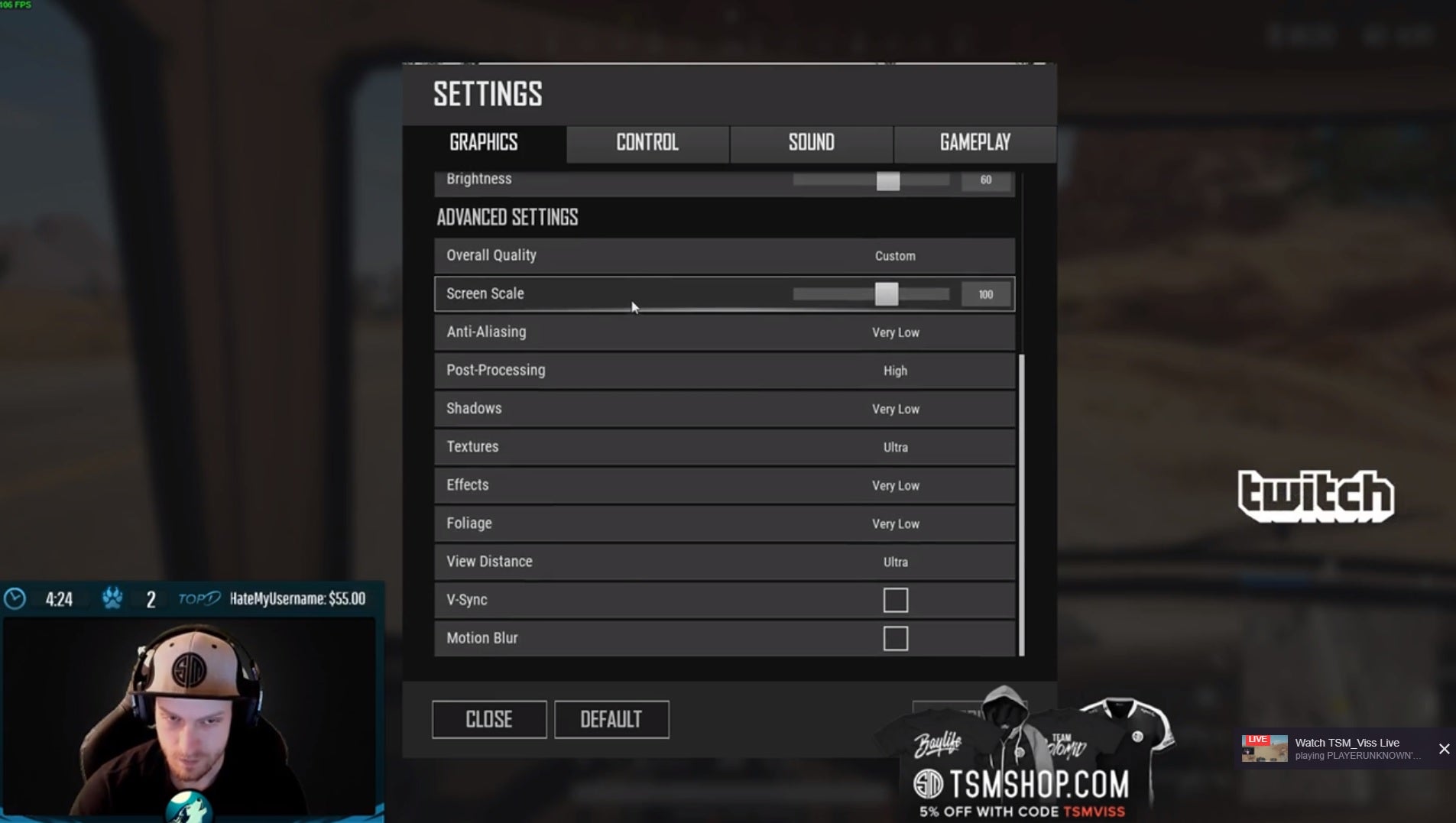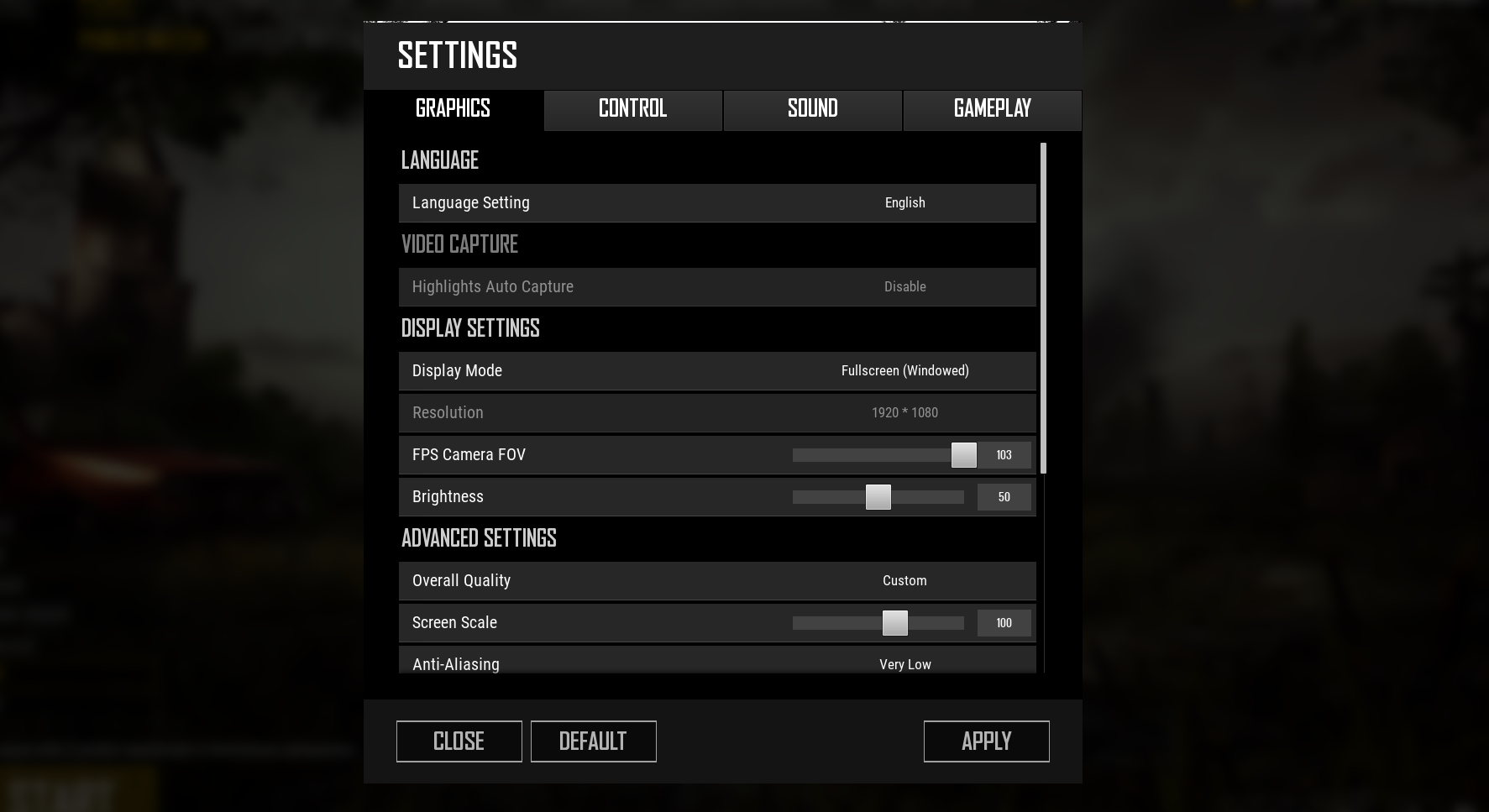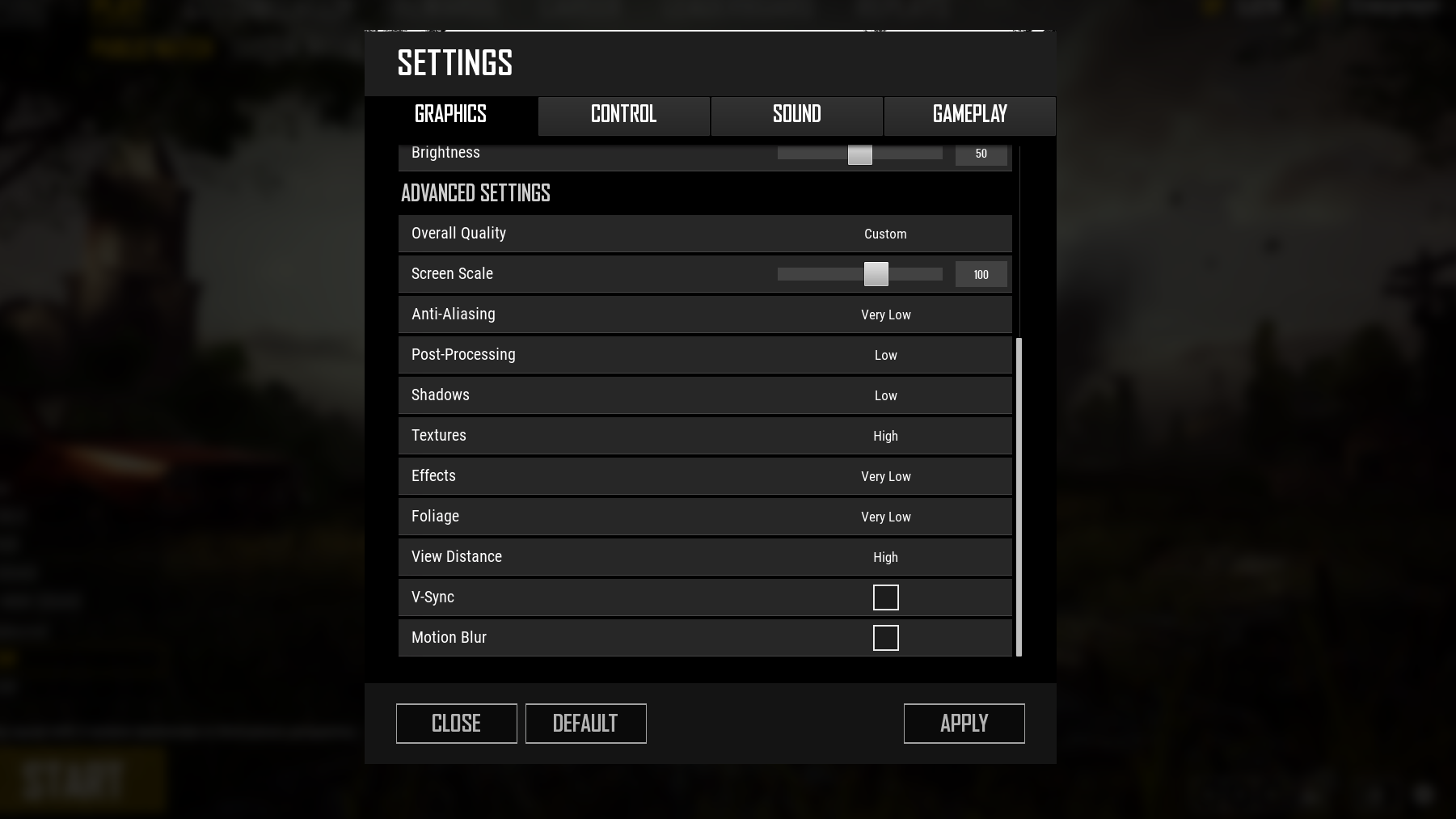Here on this page, then, we’ll be explaining both the best PUBG settings for a competitive edge, and the best settings for how to increase FPS in PUBG, too, so whether you’re out to tryhard your way to a chicken dinner, or just trying to get the game to run smoothly, you should be sorted. Copying your favourite pro is certainly a way to do it - but that misses a large part of the question out. It’s important to know why the pros’ settings are what they are if you want to get the most out of them, because for one those pros’ personal preferences for settings will change over time, and likewise so will their effects in-game as Bluehole continues to prod and poke at the code. Generally, if performance isn’t an issue, top players will tweak their graphics options in PUBG to gant increased visibility of their opponunts. Recuding foliage, for instance, can grant you some extra line of sight on the lush Erangel map for instance, whilst lowering visual effects reduces the visual impact of things like smoke and explosions. In the next section we’ll explain our logic behind the recommendations in more detail, but for now here’s a look at the general settings preferred by professional players and streamers. Note that to get the details below, we gathered together info on players like TSM’s Viss, along with the well-known Dr Disrespect, Shroud, and more, and combined with our own experience and experimentation. Here’s what we recommend: The best PUBG settings for visibility and a competitive edge It’s worth noting that options and graphics settings really aren’t an exact science - your computer and its components are going to dictate how PUBG performs at different settings, and likewise your personal preferences are going to be the most important factor when it comes to the more relative aspects like Brightness and Field of View, in particular. Anyway, let’s dive in! Window Mode - this just dictates how the game window appears on your screen itself. Fullscreen (Windowed) is generally the default and allows you to tab out easily enough, especially if you’re using a second screen beside it. Display Resolution - You should always be aiming for 1920 x 1080 here, as that’s the standard for full HD. The higher you set this the lower your game’s performance will be, and of course the lower it is the better the performance. It’s also one of the most impactful settings for affecting the FPS of your game, so if you’re seriously struggling, consider tweaking the resolution as your last resort. Camera FOV - More of an issue for FPP (first person perspective) games, the FOV is your field of vision. The wider it is, the more you can see on-screen. The max is 103 in PUBG, and generally the top players we looked at have it set between 90 and the 103 cap. Seeing as you can see more of the battlefield with it turned up to the highest, we so no reason why you shouldn’t max this one out. Brightness - This one’s a personal preferance option, with no impact on the performance of your game. The higher it is, the brighter it’ll be. Generally people stay around the average of 50-60, erring on the higher side if you’re playing in brighter environments, just to help with visibility. Overall Quality - You can use pre-made settings here, but as soon as you tweak anything yourself it’ll set to Custom, hence it being Custom for us and most players who dive into the options menus. Screen Scale - This setting is for reducing “jaggy” edges in-game, by asking your game to render at a higher resolution than your monitor can output. So if you have a 1080p monitor and set the game to 1920x1080 resolution, increasing Screen Scale to over 100 will actually mean the game renders at higher than 1080p, smoothing out some of the rougher aspects of the visuals. It significantly impacts performance when you increase it however, just like upping the resolution itself would, and the only benefit is a nicer aesthetic - hence competitive players keeping it at the default 100. Anti-Aliasing - Using anti-aliasing also reduces the appearance of jagged lines, but whilst in some games it can be have a costly impact on performance, with PUBG it’s surprisingly small. top players will keep it low to eke out as much performance as possible and reduce the ever so slight blurriness of edges that it introduces in smoothing them out - and thus gain the maximum amount of differentiation between objects when you look at them - but in reality the difference here is going to be minimal either way. Post-Processing - General visual quality improvements that are performed after the game’s rendering is done, post-processing has quite a high impact on FPS when turned up, but a fairly minimal impact on the visuals, hence most players keeping it low. Textures - Texture quality is probably the one thing you can set to as high as possible to drastically improve how your game looks, without really affecting performance by much at all. If you’re struggling for FPS, setting this to medium or above, and everythign else to very low, is probably the best way to balance visuals and performance. Generally, top players have it between Medium and Ultra - with most using Ultra - as it stops the game from looking completely hideous whilst having minimal impact on your ability to spot other players. Effects - Things like explosions, blood splatter and smoke’s appearance are governed by this setting. The impact this has on the frame rate seems to vary from patch to patch, but it can be significant. Setting it low is also what top players do to minimise as many visual effects that can obstruct your line of site as possible. Foliage: Trees! And plants and grass. This has a miniscule effect on performance, but setting it to very low is the option for players so that there’s as little as possible getting in the way of your line of sight, just like the Effects setting. View Distance - One of the most contentious settings, View Distance has a minimal impact on performance in most cases, but top players really vary in their preferences here. View distance governs how close objects need to be before they start popping in. The lower the view distance, the closer you need to be to things like the general landscape before they actually appear in-game. Generally, we prefer it at the upper end so that we know exactly what’s around us, but there’s an argument that keeping it lower means you might be able to spot far away players that would otherwise have been hidden by terrain. V-Sync - The default is to keep most of this off. V-Sync is a setting that causes your game’s frame rate to sync up with the refresh rate of your monitor, to reduce things like screen tearing and visual artifacts appearing. It’s quite costly in terms of FPS though, and those negative aspects like screen tearing only occur when you’re getting frame rates well above the refresh rate of your monitor anyway, which you probably don’t need to worry about with a demanding game like PUBG! Motion Blur - As with V-Sync, the default is to keep this off. Turning it on introduces an intentional blur to the screen when you turn around quickly - great for immersion, not great for being able to see what you’re doing in tense situations. Minimal impact on performance either way, but all the top players keep this off, for obvious reasons. PUBG update #29 is live: here’s our guide to the latest PUBG patch notes for update 29 to get you up to speed. Meanwhile, we’ve dedicated pages on the Sanhok map, Erangel map and Miramar map and Vikendi map, too. If you’re after some broader advice, our list of PUBG tips and tricks, PUBG weapon damage stats and the best weapons and best PUBG loot locations can help. Interestingly, and perhaps typically, PUBG doesn’t actually have “recommended” specs like games usually do. Instead, there’s just a bare minimum that you should be aiming to exceed across the board. Note that the one thing that is compulsory though is the operating system, which must be 64-bit. As we mentioned above, it’s worth remembering that the best graphics settings really do vary case by case. Your system might require you to turn certain more demanding settings down, or it might allow you to crank those more demanding ones up a little higher than average. Likewise, your preferences might dictate that, actually, you prefer a little more foliage because you prefer immersion to competitive advantage, or maybe you find the dodgy low effects more distracting than just turning them up to a usual standard. Ultimately, it’s always your call!


